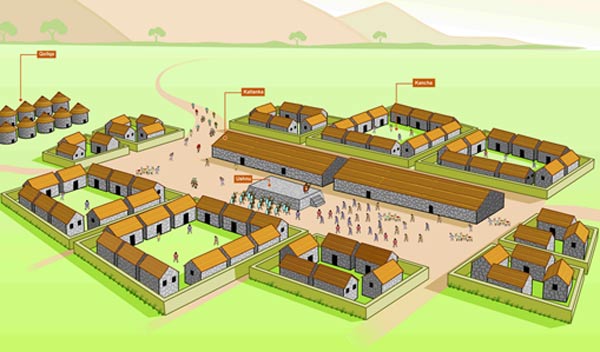Important Inca ceremonial site uncovered in Peru
The Ministry of Culture in Peru has announced an important discovery in the Inca administrative centre of Hatun Xuaxa, which relates to the study of the so-called ‘well of liquid offerings’ into which the Incas poured liquor made from maize as part of ceremonial activities. Archaeologists also unearthed a human burial, believed to be an offering related to the foundation of the city, as well as ancient walls belonging to the first period of Hatun Xuaxa’s construction.
The ancient centre of Hatun Xauxa, founded in the 15 th century AD, is located south of the city of Jauja, in the central Andean region of Junin in Peru. It was once one of the most important cities of the Inca empire, established as a strategic centre for all demographic, military, and economic movement in the region.
Provincial administrative centres, such as Hatun Xauxa typically consisted of buildings for housing, industry, storage, hosting officials, and areas for public ceremonies and ritual activities, such as ‘ushnu’ temples. Archaeological evidence suggests that Hatun Xauxa was a centre dedicated to the worship of divinities including Macahuisa, son of Pariacaca, the Inca deity of water and rain.

Hatun Xauxa in the region of Junjin in Peru. Image source.
An ushnu is a pyramid-shaped, terraced structure, built according to astronomical alignments, that was used by the Incas for ceremonies that involved pouring liquid offerings into a well. The structure is that of a rectangular pyramid formed by five platforms with a type of throne at the top, made of stone and covered in gold, where the Inca ruler would sit to preside over the ceremonies and rituals.

Example of an ushnu, located in Vilcashuaman, Ayacucho, Peru. Image source: Wikipedia
In the northern corner of the ushnu at Hatun Xauxa, researchers found walls exhibiting traces of red paint. It is believed that the walls date back to the initial development of the administrative centre in the 15 th century. In addition, archaeologists uncovered a human burial, which they believe was an offering relating to the founding of the city, although how they came to this conclusion has not been made clear.

Human burial found at Hatun Xauxa. Credit: Ministry of Culture of Peru.
The Ministry of Culture said that “these findings allow us to gauge the religious importance and the complex nature of activities in the ushnu of Hatun Xauxa, reflected also in the constant changes in its architecture.”
The researchers now plan to conduct comparative studies with another important administrative centre called Huanuco Pampa, where another well of offerings and associated burial grounds were discovered.
Featured image: Representation of a provincial administrative centre. Credit: Ministry of Culture of Peru.




















Comments
I'm an continually amazed at the sites they find in peru. such a wealth of culture and history!
love, light and blessings
AB
An awesome find, but I wouldn't be so quit to start labeling things just yet.
Peace and Love,
Ricky.